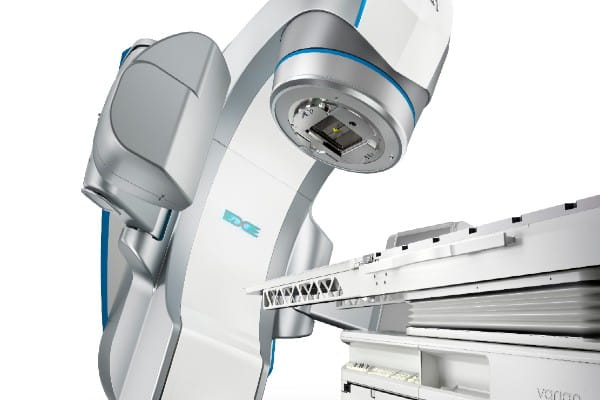Sciatica Overview
What is sciatica (lumbar radiculopathy)?
Sciatica can be called lumbar radiculopathy, or sometimes a pinched sciatic nerve. The sciatic nerve is actually a bundle of nerves that originate from the lower lumbar/sacral area of the spine. These nerves come together and make up the thickest nerve in the body, traveling from the base of the spine down through the back of each buttock, leg, hamstring and calf. Sciatica can be caused by many conditions, including muscle strain, herniated discs, bone spurs, degenerative disc disease, spinal stenosis, osteoarthritis, pregnancy, facet cysts, blood clots, abscesses and (rarely) tumors. In most cases, a herniated disc or bone growth in the lumbar area causes the sciatic nerve to become irritated or “pinched.” This causes pain that radiates along the path of nerve. There can be associated tingling, numbness, muscle weakness and limited function.Who gets it and when?
Sciatica is a very common condition, estimated to be experienced by 10% to 40% of people at some point in their lives, usually after age 30. It’s common for older adults to develop sciatica because of bone spurs, and for women to experience it during the last trimester of pregnancy.What causes sciatica
What are the causes and risk factors of sciatica or lumbar radiculopathy?
The risk factors for sciatica include repetitive motions like bending or twisting (which can cause a herniated disc), a sudden injury (such as a car accident or sports collision), obesity, prolonged sitting, poor ergonomics and diabetes, which increases the risk of nerve damage throughout the body.What are sciatica symptoms
What are the signs and symptoms of sciatica?
Symptoms experienced by people with sciatica include:
- Pain along the sciatic nerve, usually on one side of the body
- Pain that can range from swift (like an electric shock) to chronic, or from sharp and burning to a dull ache
- In severe cases, bladder or bowel incontinence
Sciatic Nerve Pain
How is sciatica diagnosed?
To diagnose sciatica, your provider will evaluate your medical history and conduct a physical exam, which will likely include a close examination of your gait when walking, as well as your strength and ability to raise a straight leg while lying flat. Diagnostic imaging may include an X-ray, MRI and/or CT. Another diagnostic test that might be used is the electromyogram, or EMG.
Sciatica Treatment
How is sciatica treated?
Home Care
Mild sciatica often improves on its own after several weeks, with the help of some self-care at home. For the first few days, ice the area for 20 minutes at a time, multiple times a day. After several days, switch to a heating pad or warm compress for 20 minutes at a time. At this point, some people find relief from alternating between heat and ice. Other home treatments include over-the-counter NSAIDs, as well as stretching, walking and gentle activity.
Medical
If over-the-counter medications are not providing relief, prescription-level NSAIDs and/or muscle relaxers may be used. Other possible medications may include anti-seizure or antidepressant medications, depending on the cause.
Physical Therapy
Physical therapy can address sciatica by improving posture, strengthening the core and increasing flexibility.
Non-Surgical Procedures
Epidural steroid injections can be helpful in alleviating sciatica.
Surgical
Discectomy and laminectomy are the two main types of surgeries utilized to treat sciatica when other treatments have failed, and the patient has compression on the nerve.


